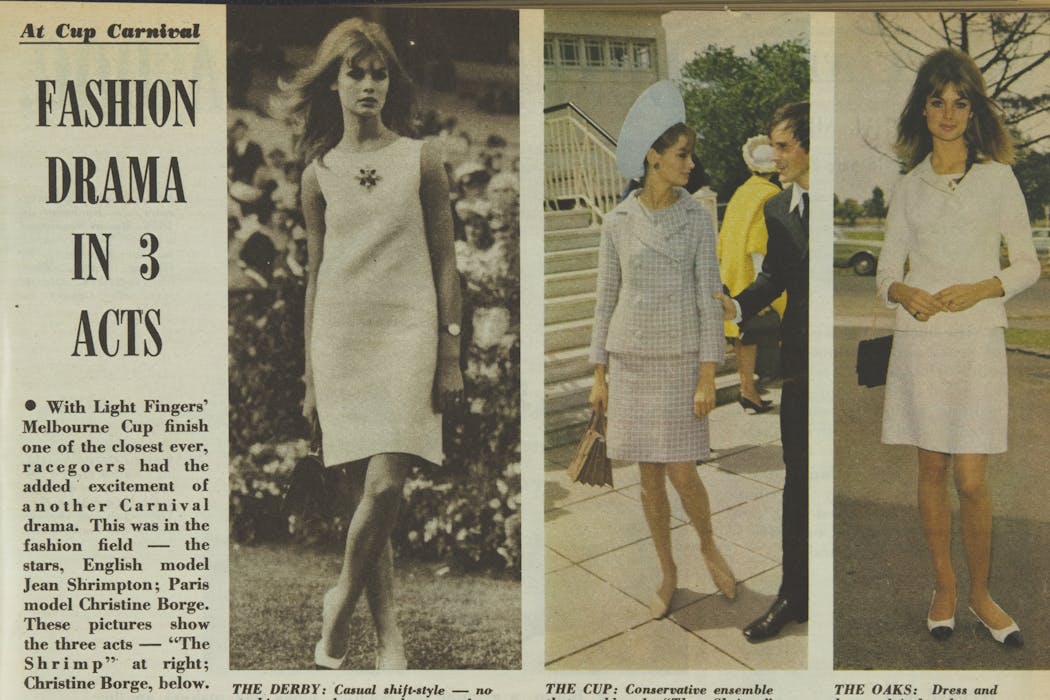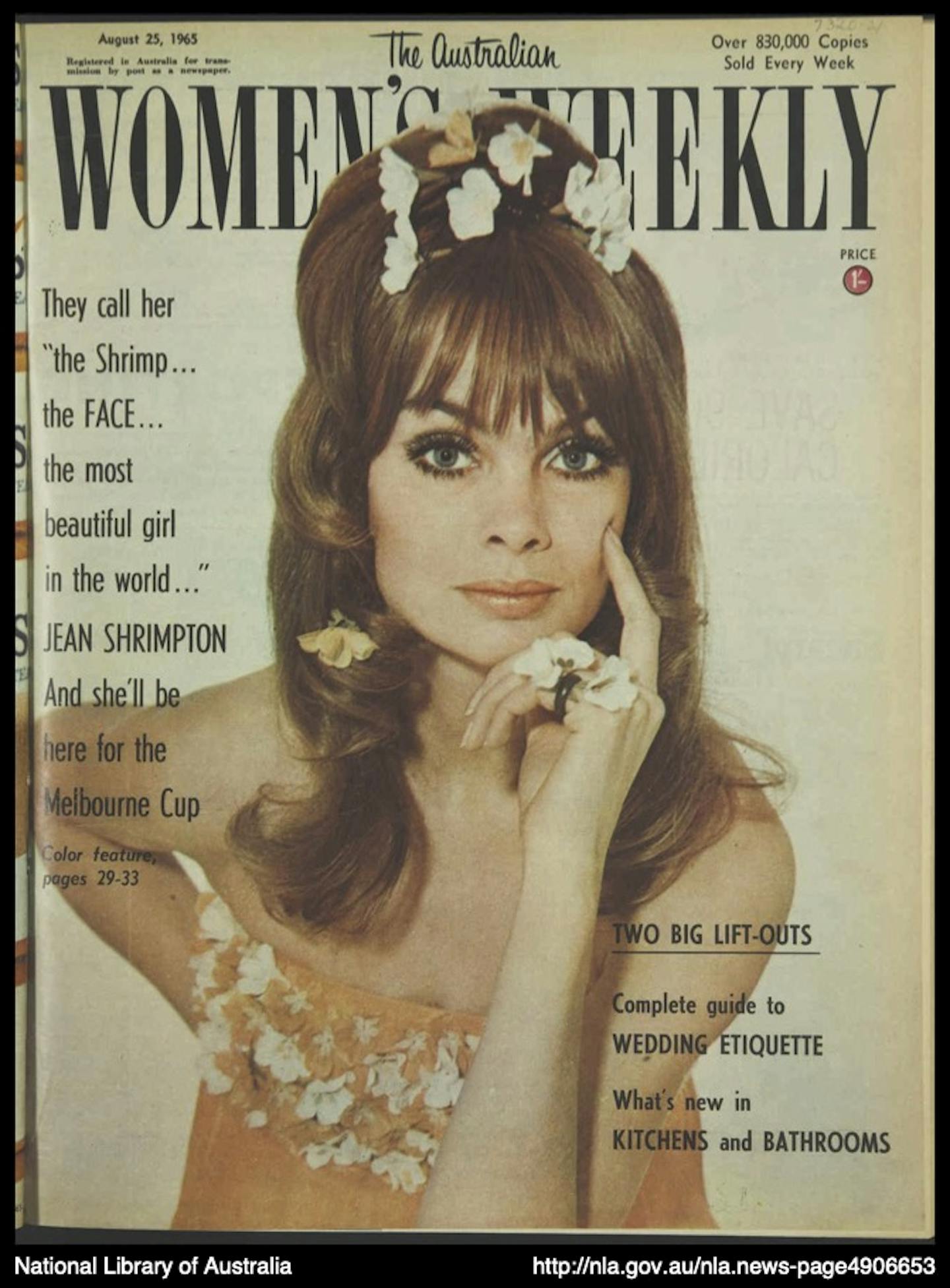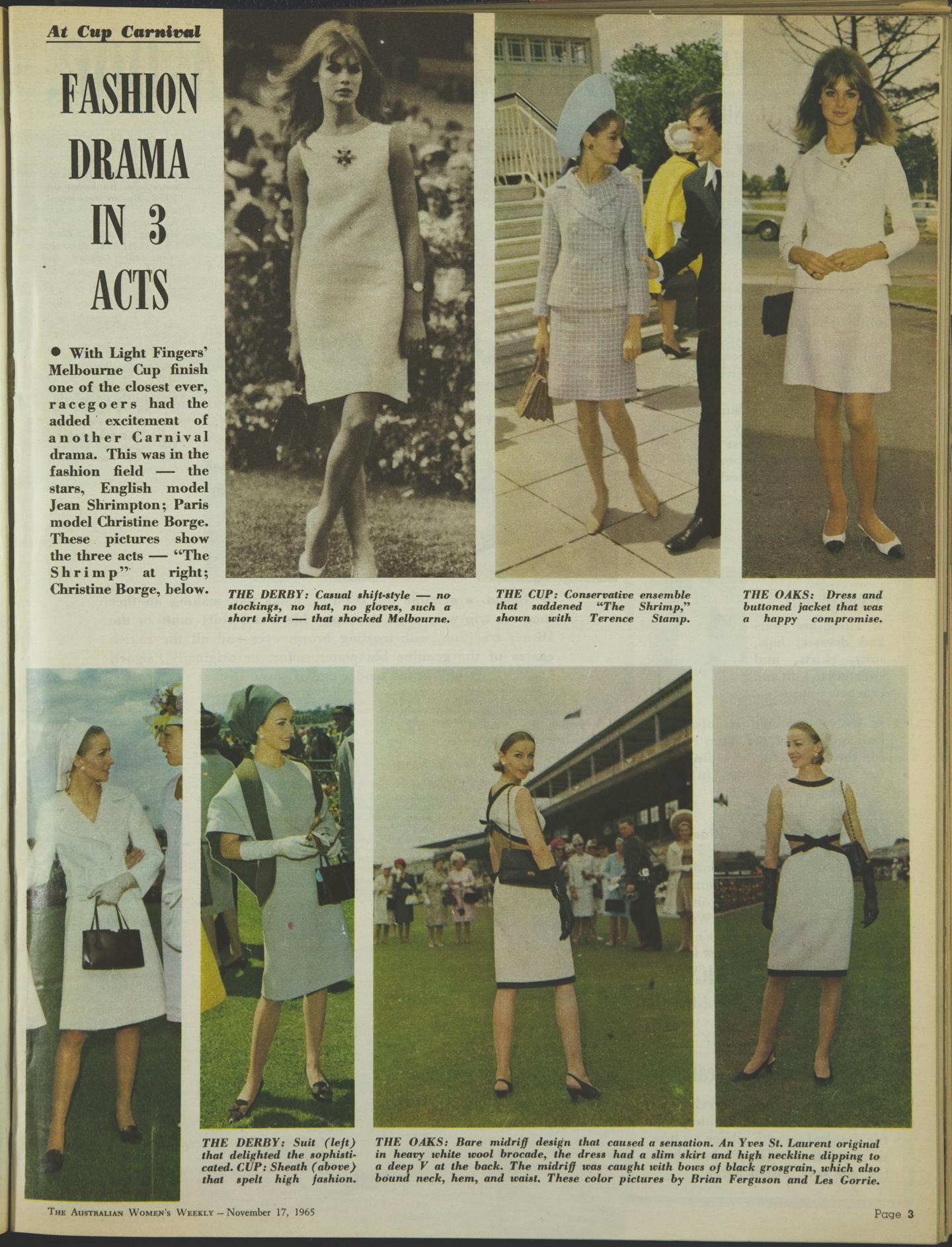
Today marks 60 years since English photographic model Jean Shrimpton, dubbed “The Shrimp”, caused a stir among conservative racegoers at the Melbourne Cup.
On October 30 1965, the then 22-year-old wore a “swinging 60s” minidress that would go on to become the stuff of legend.
Shrimpton ventured to Flemington Racecourse in a simple dress, minus the trappings of 1960s conservative female attire: hat, gloves and stockings. She was also flashing a few extra inches of bare thigh which would have been deemed unseemly for the occasion.
This dress, a mere 10cm above the knee, would hardly turn heads in 2025.
Shrimpton was one of the world’s most photographed faces at the time, and her Derby Day appearance has been credited with driving a cultural shift in Australian sartorial style – one that marked the dawn of casual dressing and the rise of youth fashion culture.
However, as my research highlights, Shrimpton did not come to Australia with the intention to shock or disrupt. In fact, her influence on fashion was more a result of the reach of one particular big business.
Why did Jean Shrimpton come to Australia?
Ahead of the 1965 Melbourne Cup, the Victoria Racing Club (VRC) invited a number of locally active textile fibre producers to bring an international model to the event dressed in their product.
The VRC hoped a bit of extra glamour and pizzazz (at no cost to them) might stem waning attendance numbers and generate more interest in the relatively new Fashions on the Field event.
But apart from the Australian Wool Board, the only party to take up the offer was multinational chemical and textile giant DuPont de Nemours Inc (DuPont). DuPont hired Shrimpton under a sponsorship contract, and arranged to fly her to Australia to wear and promote one of its synthetic fibres called Orlon.
At the time, Orlon’s reputation in the fashion market was practically non-existent. What better way to increase its profile than to have it associated with a famous face?

Rumours of a tussle over fabric
Shrimpton was sent lengths of woven Orlon fabric in advance, and given free rein in having her racewear made in designs of her choice in London.
Stories abound about her having insufficient fabric to work with – hence the short hemline. In her 1990 autobiography, Shrimpton blamed DuPont for shortchanging the fabric allowance, but then affirmed she would have worn similar styles to any other race meeting in the world, as short skirts were “in” in 1965. DuPont also knew about those “mini” London styles Shrimpton was famous for wearing.
If the company had erred, or if Shrimpton had really craved a more traditional hemline, supplying additional fabric would not have been a problem for the large, well-resourced multinational.
When Shrimpton and her boyfriend, English actor Terence Stamp, touched down at Essendon Airport on Derby Day, they were 24 hours late.
A welcome party planned for the evening before Derby Day at Melbourne’s Top of the Town restaurant was cancelled at the last minute when DuPont got word around 6pm that the guest of honour was still in Sydney. The “big shrimp” ice carving prepared as a party centrepiece was left to melt.
Shrimpton was lucky to have made it to the Derby Day meeting at all. With no time to freshen or change, DuPont representatives hastily bundled her and Stamp into waiting vehicles at the airport, and headed straight to Flemington Racecourse.
What happened next is, shall we say, history.
Fallout from a fashion faux pas
Many have recalled the indignation among racegoers when Shrimpton entered the members’ enclosure on Derby Day — as well as the furore that erupted later and was enthusiastically fanned by the media.
Strict dress codes ruled supreme in the members’ enclosure. It was a space of conspicuous consumption, and one where haute couture traditionally took centre stage.
The promotional buildup to Shrimpton’s Australian arrival had been robust thanks to DuPont’s marketing efforts, so some of the public’s indignation and anger was likely tinged with disappointment.
The magic of a much-anticipated celebrity appearance was quickly dashed by the reality of a young model with unruly, windswept hair, wearing a simple, synthetic dress.

Critics blasted Shrimpton’s supposed lack of etiquette, manners and fashion choice, while Australia’s provincialism was called out internationally.
And while Shrimpton maintained her right to dress in her own style, she went home nursing bruised feelings over her public dressing-down. Meanwhile, DuPont’s involvement in the incident was all but forgotten.
Six decades on, Shrimpton retains her status as an icon who delivered Australian youth from the stifles of conservative dressing. But it’s also worth remembering the big business sponsorship behind her famous appearance.
After DuPont’s initial attempt at damage control – which involved supplying Shrimpton a hat and stockings for the Cup Day meeting – the company’s marketers quickly embraced the controversy as “absolutely sensational!”
It seems they followed the logic of 19th century showman P.T. Barnum, who reportedly said “there is no such thing as bad publicity”.
This article is republished from The Conversation, a nonprofit, independent news organization bringing you facts and trustworthy analysis to help you make sense of our complex world. It was written by: Pauline Hastings, Monash University
Read more:
- The Celebrity Traitors: how star status changes the game
- Lisztomania: why did women go gaga for 19th century pianist Franz Liszt?
- Politics with Michelle Grattan: Tony Abbott on Australia’s past and the opposition’s future
Pauline Hastings does not work for, consult, own shares in or receive funding from any company or organisation that would benefit from this article, and has disclosed no relevant affiliations beyond their academic appointment.


 The Conversation
The Conversation
 Vogue Shopping
Vogue Shopping Vogue
Vogue Raw Story
Raw Story